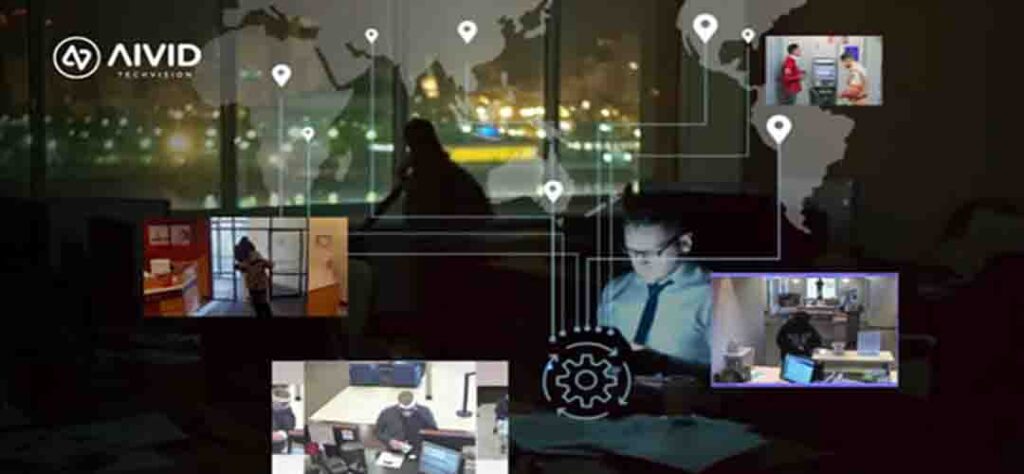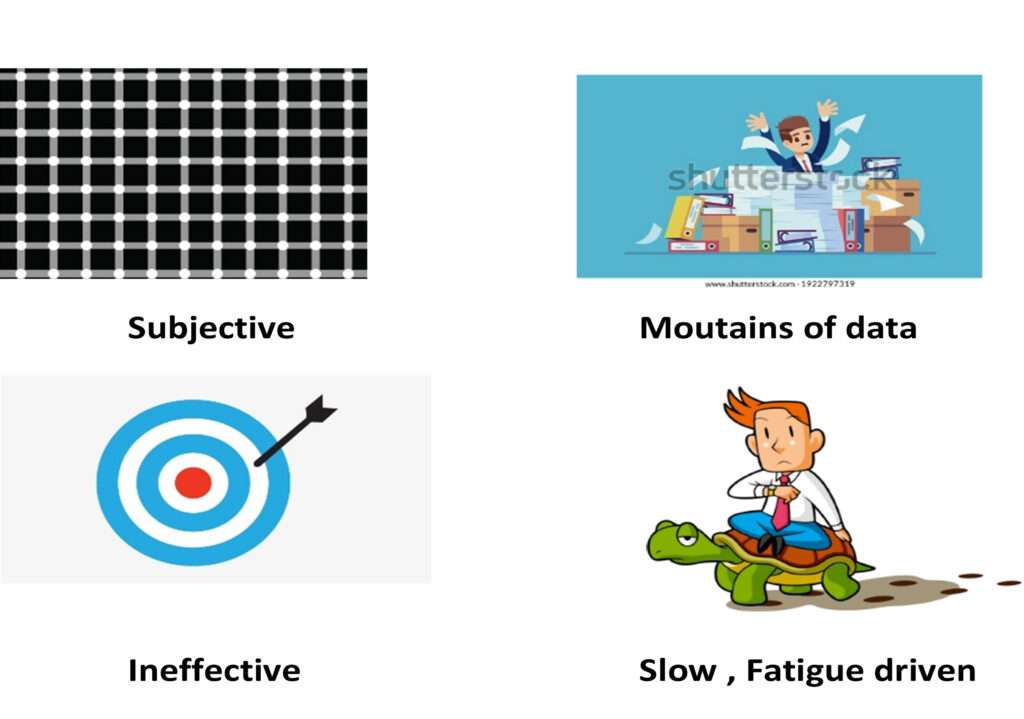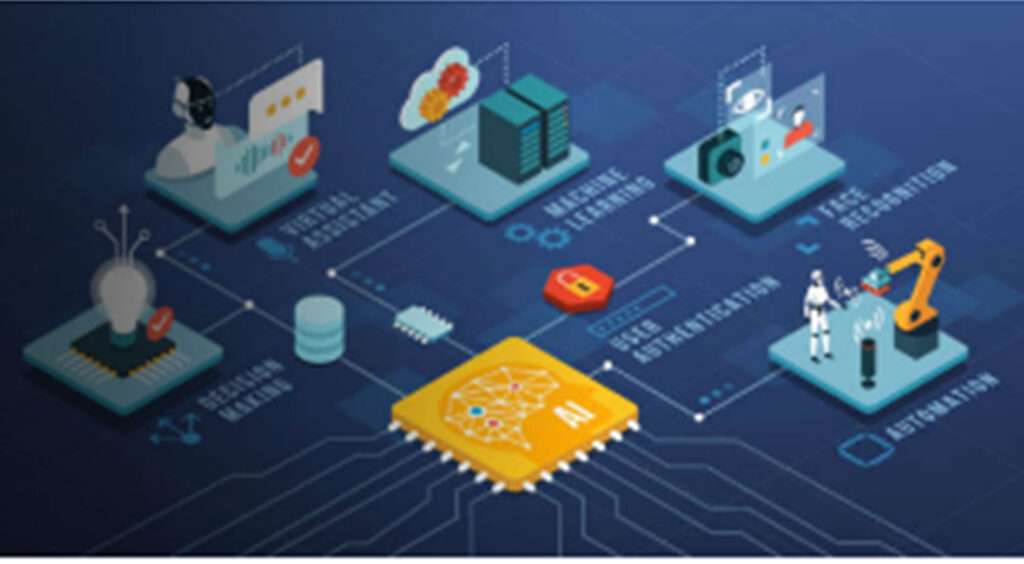
SOP Inspections are crucial for the operations of every organization. Conducting regular inspections helps ensure reliable performance, worker safety, efficiency, quality, and deter threats. With the pandemic still looming on enterprise operations, physical inspections have become trickier than ever. Organizations across industries have hence switched to remote inspections.
Remote inspection rests on three key elements:
- Video data from the onsite location.
- An intermediary person, software, drone, or other devices with mobility for carrying the camera and covering the site.
- An onsite or offsite inspector who examines the sampled video data
The Current State Inspections
While this may have been a workaround but even the most trained and seasoned experts would agree that it was immensely difficult, as it still required at least one person to walk around with a camera inspecting the premises. The pandemic brought out that this process is sub-optimal for wanting sustained improvement, and here’s why

1. Sampling-Based Assessment
Most inspection specialists perform physical assessments on a weekly or monthly basis. As most business operators would already know – sampling can be a good starting point for better quality control, but it is never sufficient.
2. Lack of Unified Inspection Data
While security specialists conduct the physical inspection, only the issues get recorded and reported. Several minor deviations might get missed. Plus, the management team usually does not have an accessible mechanism to analyze this data to perform trend analysis.
3. Detection to Action Gap
There can be several hierarchical processes between a security system deviation being detected and an action being taken; this opens the organization to several compliance risks for a considerable period.
4. Coverage Across Locations and Time
Even the most efficient specialists cannot cover all the premises at all the given times. Thus, it would not be unreasonable that some parts might remain under or not inspected at some points in time, leaving critical vulnerabilities undetected.
5. Fatigue and Biases
Performing the same inspection over and over again can cause analysis fatigue. The security analysts might also have behavioral biases stopping them from detecting early signs of compliance breaches.
SOP Inspection Automation Using CCTV: Streamlining Inspection at Scale

AI BOTS – Vision-based BOTS are the solution to target most of the issues inherent with the remote and physical inspection model. The goal is not to replace the experts and analysts but to augment their capacity and make the organization’s standard operating procedures (SOPs) more robust.
The AI Vision BOTS are trained on specific activity datasets and utilize deep learning, neural networks, technology; they can perform with greater accuracy and continue to improve as more data is analyzed, derive performance benchmarks, and are sensitive to even the slightest deviations at the exact second they occur. Deploying such a system at scale results in:
1. Deep Learning
The AI BOTS leverage deep learning at scale. As a result, the solution provides consistent, reliable inspection and is more cost-effective as it consumes virtually no human resources while still conducts inspections.
2. Comprehensive Coverage
AI BOTS can cover all the CCTV data across all the locations at the same time. This makes sure the firm has on-record access to all the activity surrounding its assets and has a historical record of all the instances where security or compliance parameters were breached.
3. Prompt Report Generation and Alerts
The first level of analysis is performed by the AIVID BOTS trained on that activity and the rules to identify non-compliance statistically. Once such a breach is detected, the AI BOTS can automatically send alerts across the system and trigger prompt action. The eliminated need for human intervention in this mundane, repetitive task makes it more responsive, sensitive, and reliable.
4. Historical Data Availability
The Compliance teams spend a large majority of their time collecting data. With AI BOTS, the same team can expedite the entire process by as much as 80% and allocate the human capital to analyze the data to create proactive improvement measures.
Let us understand this via Banks use case:
Leveraging AI to augment Its Security, Compliance, and Productivity
Banks have operations spread across the nation, with several branches & ATMs in rural and urban areas; the sheer scale of operations makes it extremely difficult for a branch to conduct audits/inspections done as a result of the pandemic. A recent news IBA has drawn up SOPs that banks must follow to start full-fledged operations.
While the inspection is mandatory for banks but if it’s done periodically and remotely the impact of it is short-lived, leaving room for vulnerabilities and critical gaps.
In an endeavor to be more secure, most banks have CCTV installed across all premises; however, the problem remains, its almost impossible for the security guard to keep watching the video wall connected across 1000s locations, and that’s when security breaches, SOP lapses happen.
An AI-based video intelligence solution sits on top of the bank’s existing CCTV infrastructure and poses zero integration challenges.
The solution aggregates camera data and independently carries out inspections only using the live camera feeds. It provides benchmarks of acceptable scenarios and detects anomalous activity. Automate SOP Inspection also provides unified data for all zones with all the historical trends and breaches.
The compliance team can realize a manifold decrease in the potential risks, adherence to regulatory SOPs across all branches such as,
- Unsanctioned entries to restricted areas, people count during vault open, teller door open & close time analysis.
- Loitering detection in ATMs, Intrusion into premise during unscheduled hours, Sites with maximum intrusions.
- Crowding in branch & ATM, social distancing & mask-wearing norms’ adherence and Customer walk-in count.
- Verification for customer disputes such as no cash dispensed from ATM.
- Staff presence at desk, Security guard presence, uniform detection, clean desk monitoring.
With data available for all days across the branches in the form of visualized reports and dashboards, the bank’s compliance team can now drive data-driven decisions & standardize the entire process and streamline even the slightest deviations.
Physical vs. Remote vs. AI-Driven Inspection
It is critical to conduct continuous inspection at a granular level to ensure no compliance risk becomes an operational bottleneck. The below table shows how AI-driven SOP inspection can contribute multi fold gain for organizations
| Physical Inspection | Remote Inspection | AI-Driven Inspection | |
| Conducted | Onsite inspection by an expert | Remote inspection via video call | Automated via Camera feeds |
| Time & Frequency | Time consuming & Slow process | Limited based on sampling | Continuous |
| Subjectivity & Biasness | High | Very High | None |
| Cost & Scale | High & Low | High & Low | Low & High |
| Insight Driven Improvement | Insights based on experts areas of expertise | Based on sampling data, driving insights can be extremely difficult | Data-Driven insights |
| Continuous Organization-wide Transparency | Nil | Nil | High |
Summing Up
With this Automation of SOP Checklist module, AIVID Techvision helps banks & NBFCs, healthcare institutions, hospitality businesses, retail spaces, and large-scale infrastructure projects by augmenting the human capital engaged in security & compliance.
The underlying technology uses AI, Deep Learning, Neural Networks, and Visual Computing to deliver a real-time solution with central control. You now have inspection, alerts, and intelligence – all available on one platform, ready to make compliance a seamless function and create more value with your video data. Get in touch with us to explore the AIVID BOT!